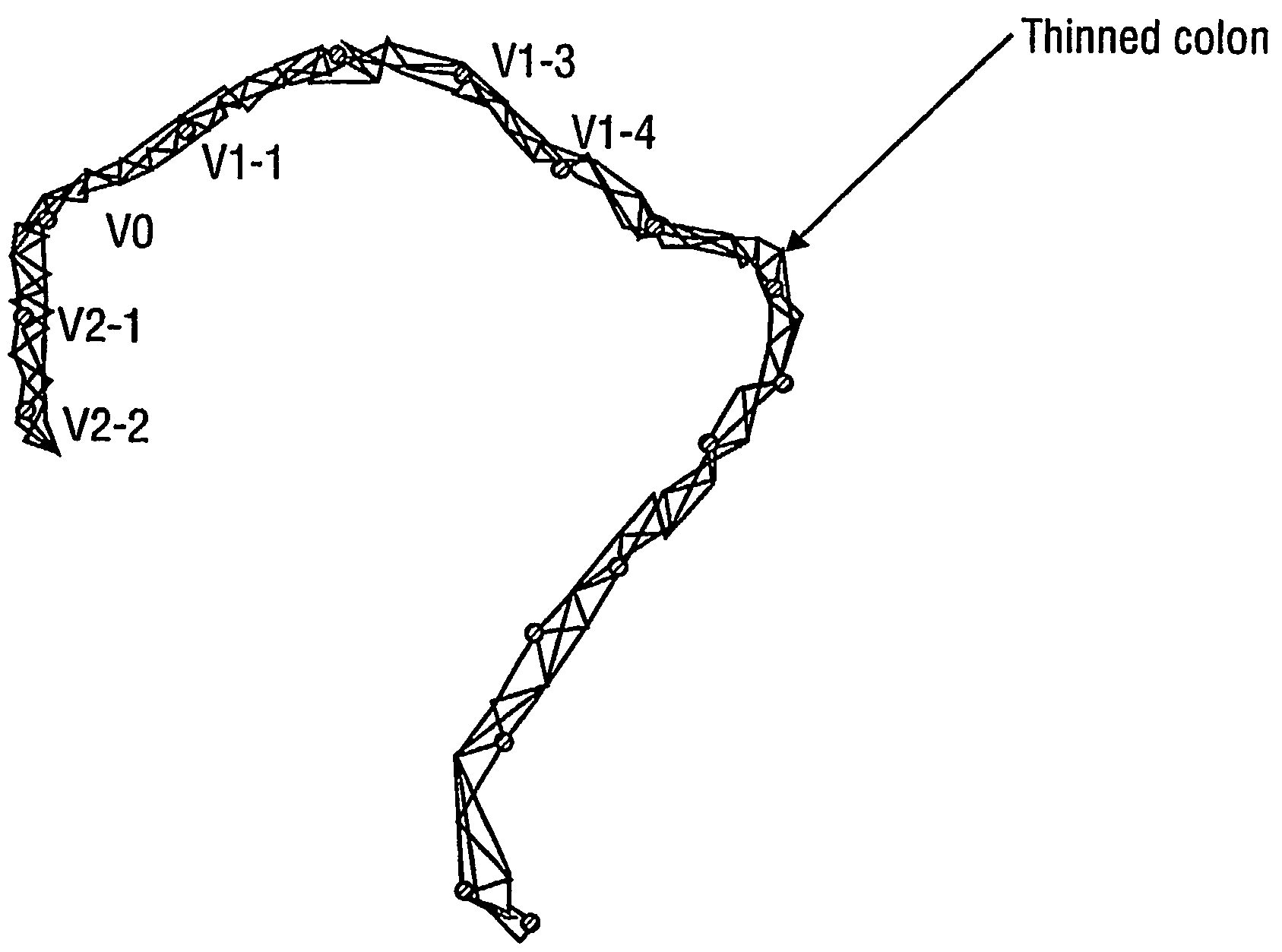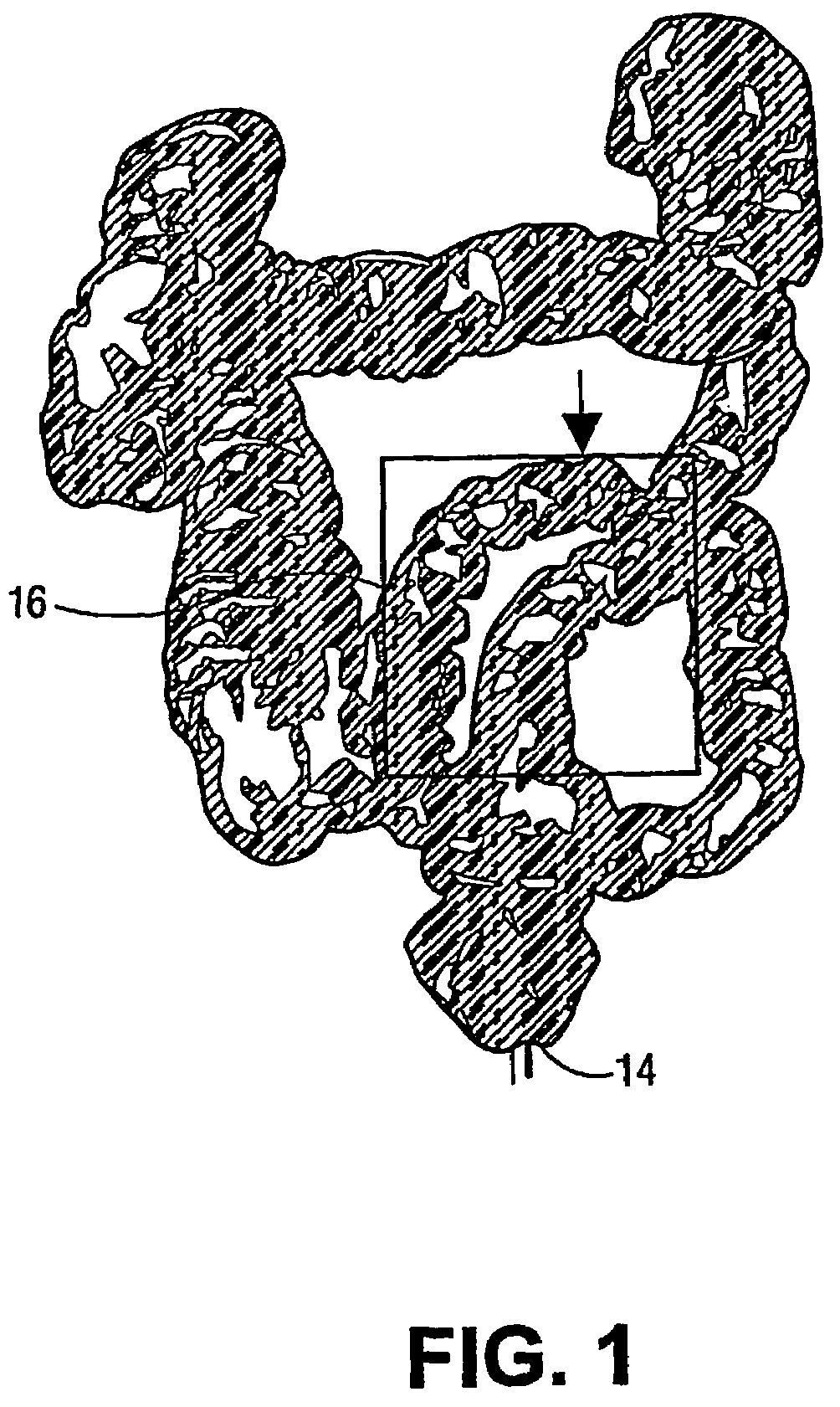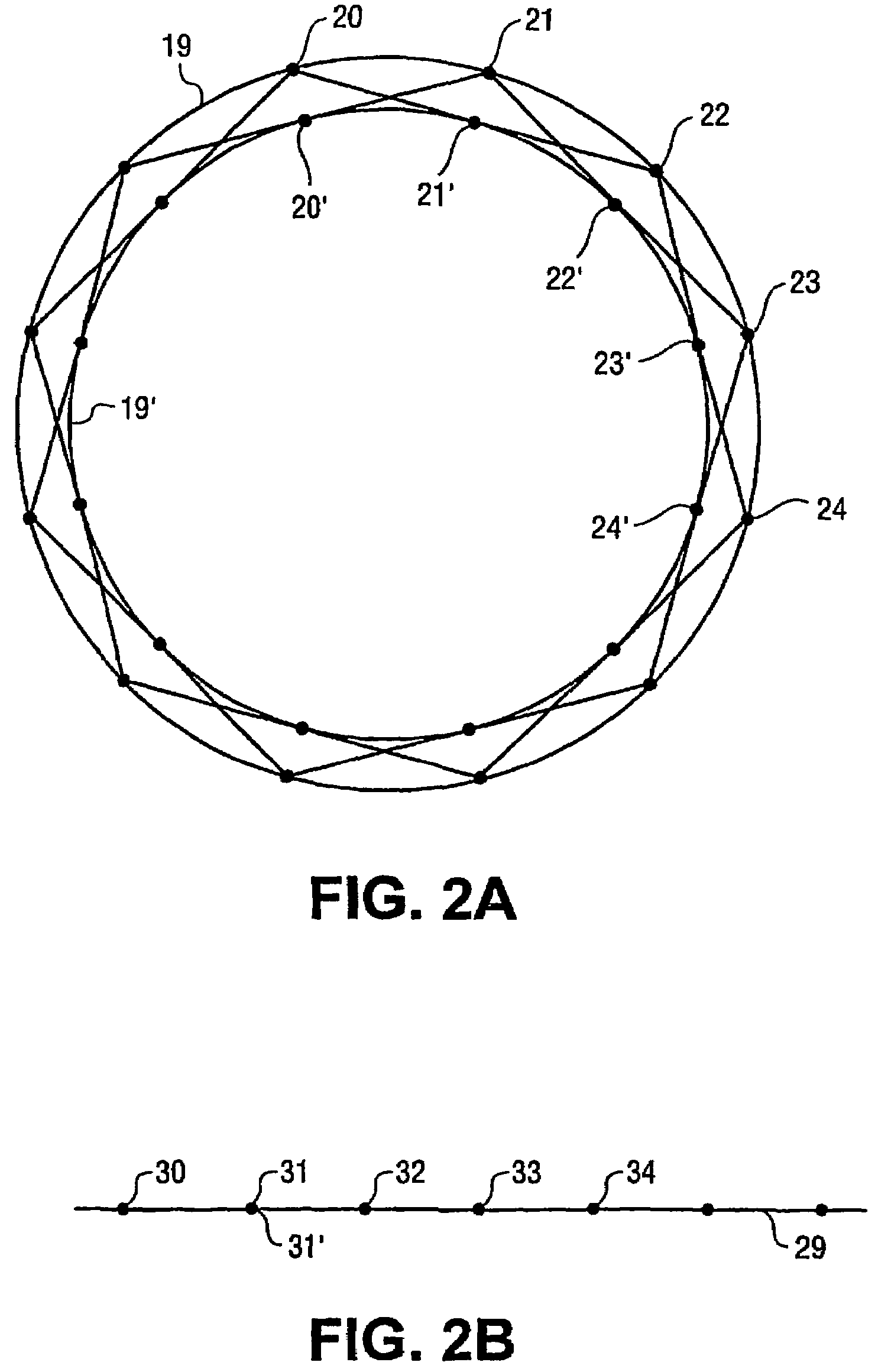Automated centerline detection algorithm for colon-like 3D surfaces
a technology of colonlike 3d surface and automatic detection algorithm, which is applied in the field of automatic centerline detection algorithm for colonlike 3d surface, can solve the problems of challenging further processing of images such as detecting the centerline of colon, and achieve the effect of accurate ring profile of colonlike surfa
- Summary
- Abstract
- Description
- Claims
- Application Information
AI Technical Summary
Benefits of technology
Problems solved by technology
Method used
Image
Examples
Embodiment Construction
[0049]Referring to FIG. 1, we assume the acquisition of a 3-D image of the colon like surface such as that disclosed in Summers et al. U.S. Pat. No. 6,246,748 issued Jun. 12, 2001 and entitled Method for Segmenting Medical Images and Detecting Surface Anomalies in Anatomical Structures. We are using the results of the module which process the CT slices and computes the 3D surface of the colon in accordance with that disclosure. In this view, the anal verge 14 and the cecum 16 can be seen at either end of the colon.
[0050]Having acquired such an image, our problem is: given the 3D surface of the colon we want to find an (ordered) set of 3D points which define the colon's centerline.
[0051]The method involves basic steps:
[0052]1) Compute a shrunken version of the colon. Basically the distances between vertices are iteratively averaged, the result being a shrunken colon. The shrunken colon is very thin and almost as long as the original colon.
[0053]2) Model the shrunken colon by an order...
PUM
 Login to View More
Login to View More Abstract
Description
Claims
Application Information
 Login to View More
Login to View More - R&D
- Intellectual Property
- Life Sciences
- Materials
- Tech Scout
- Unparalleled Data Quality
- Higher Quality Content
- 60% Fewer Hallucinations
Browse by: Latest US Patents, China's latest patents, Technical Efficacy Thesaurus, Application Domain, Technology Topic, Popular Technical Reports.
© 2025 PatSnap. All rights reserved.Legal|Privacy policy|Modern Slavery Act Transparency Statement|Sitemap|About US| Contact US: help@patsnap.com



